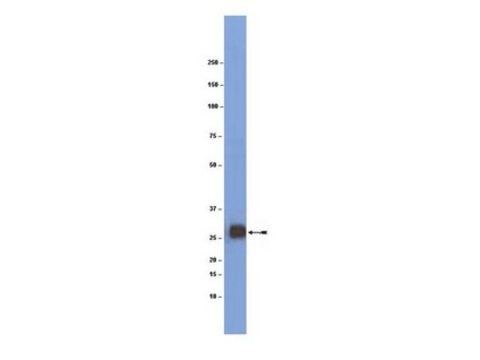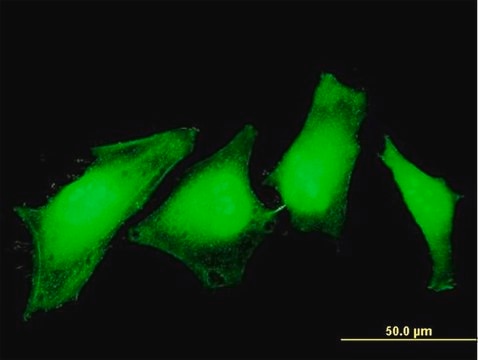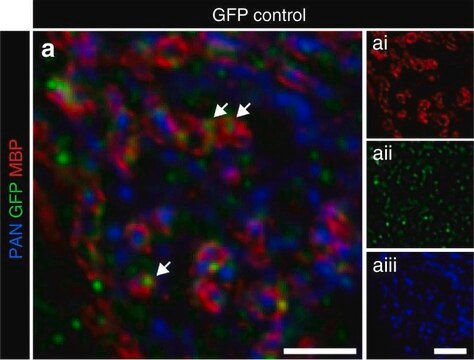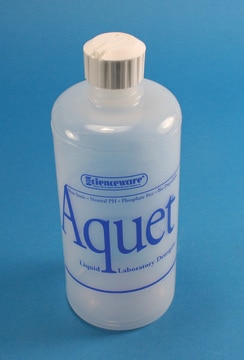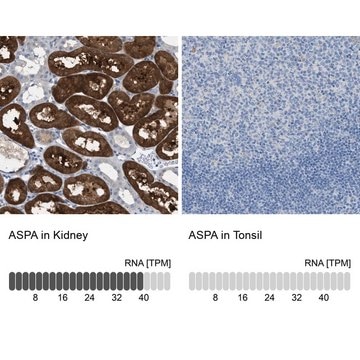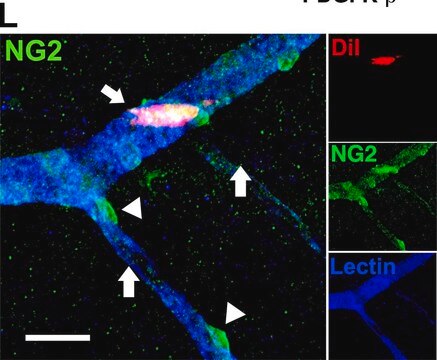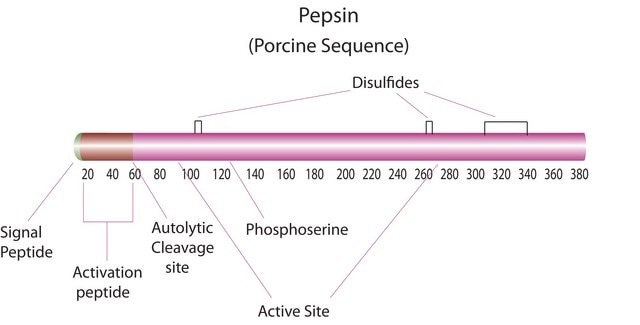ABN1698
Anti-Aspa/Nur7 Antibody
from rabbit, purified by affinity chromatography
Synonym(s):
Aspartoacylase, Aminoacylase-2, ACY-2, Aspa/Nur7, Anti-Aspartoacylase
About This Item
Recommended Products
biological source
rabbit
Quality Level
antibody form
purified antibody
antibody product type
primary antibodies
clone
polyclonal
purified by
affinity chromatography
species reactivity
human, mouse, rat
technique(s)
immunohistochemistry: suitable
western blot: suitable
NCBI accession no.
UniProt accession no.
shipped in
wet ice
target post-translational modification
unmodified
Gene Information
human ... ASPA(443)
Related Categories
General description
Immunogen
Application
Western Blotting Analysis: A representative lot detected Aspa/Nur7 in the cytosol, but not myelin, fraction from rat brain tissue homogenate (Madhavarao, C.N., et al. (2004). J Comp Neurol. 472(3):318-329).
Immunohistochemistry Analysis: A representative lot detected Aspa/Nur7 expression pattern in various regions of rat forebrain, including corpus callosum, cerebral cortex, hippocampal commissure (hc), fimbria, and anterior commissure (Madhavarao, C.N., et al. (2004). J Comp Neurol. 472(3):318-329).
Immunohistochemistry Analysis: A representative lot detected similar Aspa/Nur7 expression pattern as CC1 in various regions of rat forebrain, including the Purkinjie & axonal fiber layers of cerebellum, corpus callosum, as well as layer 2 of primary somatosensory cortex (Madhavarao, C.N., et al. (2004). J Comp Neurol. 472(3):318-329).
Neuroscience
Developmental Signaling
Quality
Western Blotting Analysis: 1.0 µg/mL of this antibody detected Aspa/Nur7 in 10 µg of rat brain tissue lysate.
Target description
Physical form
Storage and Stability
Other Notes
Disclaimer
Not finding the right product?
Try our Product Selector Tool.
wgk_germany
WGK 1
flash_point_f
Not applicable
flash_point_c
Not applicable
Certificates of Analysis (COA)
Search for Certificates of Analysis (COA) by entering the products Lot/Batch Number. Lot and Batch Numbers can be found on a product’s label following the words ‘Lot’ or ‘Batch’.
Already Own This Product?
Find documentation for the products that you have recently purchased in the Document Library.
Our team of scientists has experience in all areas of research including Life Science, Material Science, Chemical Synthesis, Chromatography, Analytical and many others.
Contact Technical Service